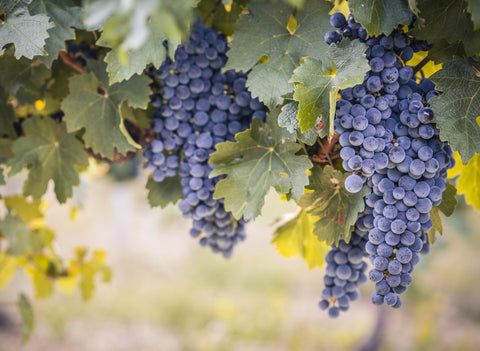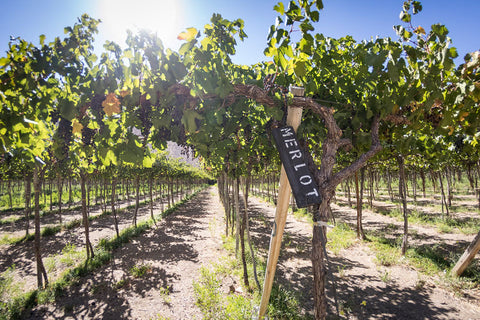Where is Grenache grown?
Grenache is grown the world over and flourishes in warm climates such as those in California, South Africa, Spain, and Southern France, namely in Rhône, where its roots are well established, yet this grape varietal is not one that originated in France but rather from Spain. Grenache, generally produce wines of a high alcohol content which are soft on the palate with berry and spice flavours. Oxer Bastegieta from Oxer wines knows all too well how to treat this grape, a self-confessed ‘natural assistant’ who uses only organic and biodynamic methods. It is this love and care which shines through in his Suzzane 2018. A wine which is an ‘ode to women’ is well-balanced and elegant, with notes of black cherry, blackberry, and sweet spices of cinnamon and star anise.
Rhône roots
Not forgetting the Cotes du Rhône region in southern France, where this grape dominates. Often referred to as ‘Rhône style’, a shorthand term for the wines from the region, this description is used for wines which are produced using the regions native grapes of Syrah, Grenache, Mourvèdre, Viognier and Roussanne. Domaine des Girasols, Rasteau "Fût" MMXV 2015 is one such example of this style, this classic and stylish wine produced from Grenache, Syrah and Mourvèdre grapes, exhibits expressive fruit flavours, a touch a spice and loads of personality. An everyday crowd pleaser!
Across the pond to California where this grape is well at home, though perhaps a little bit of the ‘new kid on the block’ having only arrive state side in the early 20th century, almost a century after arriving in other new-world counties such a South Africa. The People’s Wine Revolution (or PWR as we lovingly know them by), produce a fantastic fruity, light ruby coloured Grenache with flavours of cherry compote, redcurrant, and a hint of spice. A wonderful example from Matt Reid at PWR.
To the ‘Cape of Good Hope’ we go, and as previously mentioned, the grape arrived almost a century before it did in the USA. Known as Grenache Noir in SA, it was only officially confirmed as a varietal in the country in the 1900’s by a professor from Stellenbosch University. Though not a widely grown grape in the country, with only about 305 hectares under vine, it is still proving an incredibly popular grape amongst many South African winemakers in their red wine blends. Oldenburg Vineyards pays homage to this grape and due to their cooler micro-climate setting, really allows for the nuances of the grape to shine though. Their Grenache Noir 2016 vintage offers an intricate display of raspberries, marzipan and fennel, and finishing with spice and vanilla. Simply delicious while remaining true to its Rhône roots.
Although red wine is a classic use of Grenache, some of the best examples of rosé are made with Grenache as the main grape. Les Vignobles Foncalieu based in the French region of Languedoc, is an example of one such producer, where this grape is the hero and is producing a rosé that is 100% Grenache. Their Paradis Secret Rosé 2020 comes from a mosaic of soils from iron-rich clay and gravel to limestone marl which adds to the delicate attractive notes of peach and citrus fruit, making this a delicious everyday drinker, which will tick lots of boxes.
Fun facts...
- Grenache is known as Garnacha in Spain.
- Other variations of the red grenache grapes are white Grenache, grey Grenache, and 'peluda', or 'hairy' Grenache as it is commonly referred too.
- Grenache produced wine high in alcohol due to its late ripening.
- A classic blend is Grenache, Syrah and Mourvèdre (GSM).
- Lamb is an ideal food pairing for Grenache because there is a good amount of body to this wine and the classic herbal notes pair so well with gamey meat.
-
Some of the most popular rosés from Provence are often grenache-based.
Cheers!





Comments (0)
There are no comments for this article. Be the first one to leave a message!